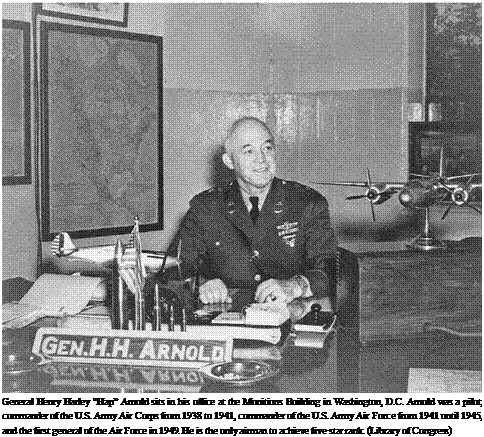1938
FEBRUARY 17 At Miami, Florida, Lieutenant Colonel Robert D. Olds leads six Boeing B-17A bombers to Buenos Aires, Argentina, to attend the inaugural of President Roberto Ortiz.
FEBRUARY 27 At Langley Field, Virginia, six Boeing B-17 bombers under Lieutenant Colonel Robert D. Olds return from a 10,000-mile round trip flight to Buenos Aires, Argentina, and back. The trip required 33 hours and 30 minutes of flying time and the crews receive the Mackay Trophy. Moreover, their success heralds that the age of strategic bombing is at hand.
April 6 At Wright Field, Ohio, testing begins on the radically different Bell XP – 39, whose engine is midway down the fuselage, behind the pilot’s compartment, with a 37mm cannon mounted to fire down the fuselage centerline. During World War II nearly 5,000 P-39s are sent to the Soviet Union, where Russian pilots praised its heavy firepower and rugged construction.
MAY 1 Along the eastern seaboard, the Army stages three days of maneuvering to establish if airplanes can repel a seaborne attack. The exercise involves 220 aircraft and 3,000 men, and is judged successful.
MAY 12 Over the Atlantic, the Army Air Corps dispatches three B-17 bombers that intercept the Italian liner Rex 700 miles at sea. The Navy, suitably alarmed, demands that Army aircraft be limited to only 100 miles from the coast. The lead navigator in this stunt is Captain Curtis LeMay.
July 28 Lieutenant Harold L. Neely, flying a Seversky P-35 fighter, completes a transcontinental flight in 9 hours and 54 minutes flying time.
AUGUST 3—12 At Langley Field, Virginia, a flight of three Boeing B-17 bombers under Major Vincent J. Meloy, 2nd Bombardment Group, departs on a goodwill flight to Bogota, Colombia, and back.
 |
August 19 At Mitchel Field, New York, the new Douglas B-18 Bolo bomber (adapted from the DC-3 transport) performs a transcontinental flight and arrives from Hamilton Field, California, in 15 hours and 18 minutes of flying time.
AUGUST 29 Major Alexander P. de Seversky sets a new east-to-west transcontinental speed record by covering 2,457 miles in 10 hours, 2 minutes, and 55.7 seconds.
SEPTEMBER 15 This year’s Mackay Trophy is awarded to the Army Air Corps for its development of the XC-35 and its pressurized cabin.
SEPTEMBER 21 Over Burbank, California, Major General Oscar Westover, chief
of the U. S. Army Air Corps, is killed when his Douglas A-17AS staff aircraft suddenly crashes. An accident inquiry concludes that unpredictable, gusty winds coupled with intense heat currents rising off the ground caused the mishap.
SEPTEMBER 29 Brigadier General Henry H. Arnold gains appointment as chief of the Air Corps to replace the recently deceased Major General Oscar Westover; he also becomes a major general.
OCTOBER 14 Over Buffalo, New York, the Curtiss XP-40 prototype fighter begins flight-testing. It enters Army service as the P-40 Tomahawk and during World War II 14,000 are built for the United States and its allies before construction ceases in 1944.
OCTOBER 26 At El Segundo, California, the Douglas Model 7B begins flighttesting. It enters service as the A-20 Havoc and, during World War II, it becomes the most-produced Army surface attack aircraft. A-20s are also widely exported to Great Britain, France, and the Soviet Union.
November 14 In Washington, D. C., President Franklin D. Roosevelt orders the mission of the Army Air Corps expanded and pushes for a 20,000-plane force. Major General Henry H. Arnold subsequently equates this secret conference to the “Magna Carta” as far as American air power is concerned.










